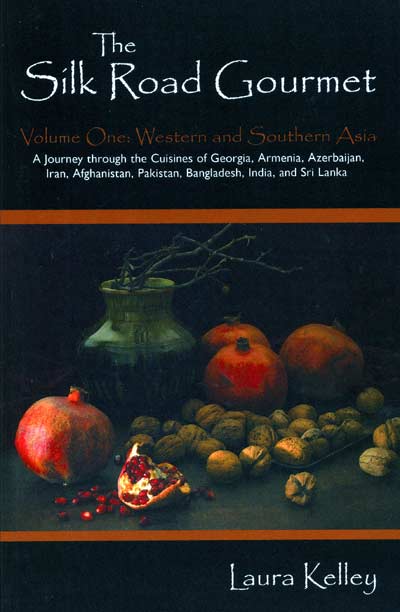
Ancient Georgian Fortress
After the Russian Revolution, Georgia declared independence and had a brief period of self-rule that lasted until 1936 when it formally became part of the Soviet Union. Since 1990, when Georgia held the first multiparty democratic elections in the former Soviet territories, Georgia has been independent of Russia. Recent events in which Russia claimed to “protect” two of its provinces, however, throw its future independence into question.
Traces of all of these foreign influences on Georgian history can also be found in its material culture, including its culinary arts. For example, the Georgians share with the Persians many native Persian ingredients, including the common use of unsweetened pomegranate juice, sour cherries, and plums along with the use of fenugreek and cumin. Similar recipes can be found in the region as well, including vegetable and nut omelets called kukus by the Persians, the enjoyment of skewered meats both marinated and made with ground meats called kebabs, and similar types of layered rice pilafs.
Georgian cuisine is the most closely related to Armenian cuisine—not only because of their shared border, but because Armenia (or its own rulers) ruled at least part of Georgia for almost one thousand years. From the seventh century onward, Georgians engaged in political, economic, and cultural contact with the Islamic world, and elements of Arab, Turkish, and Persian cuisines also can be found in the Georgian repertoire of flavors and foods. Although staunchly clinging to their Christian roots during periods of Islamic rule, the Islamic influence in Georgian food is undeniable.
Fiery Lamb Chops in Sweet and Sour Pomegranate Sauce

This dish combines the intense heat of lots of ground and slightly pickled red chili peppers in Adzhika with the rich sweet and sour flavor of Pomegranate Sauce to form a complex, layered taste for lamb of pork. When eaten, the heat is kept in check by the sauce, so it never overwhelms but rather teases and tantalizes diners for another bite. Free-range lamb would give this a truly authentic flavor, causing diners perhaps to break out in song and ask you to refill their glasses with more Khvanchkara wine!
Adzhika (see following recipe)
Pomegranate Sauce (see following recipe)
4-6 lamb or pork chops (the thicker the better)
1/4 cup beef broth
1. Wash and dry chops. Using a fork, pierce the chops on both sides in several places.
2. Spread the adzhika paste all over the meat. When the chops are lightly covered on both sides (the color of the meat should still be visible or it may become too spicy), place in a lightly oiled ovenproof pan or dish and refrigerate several hours or even overnight before cooking.
3. Preheat oven to 375. Pour a small amount of beef broth to just cover the bottom of the dish and place in the oven. Cooking times will vary according to whether the chops have been boned or not. For chops with bone in them, cook about 20 minutes on each side—gently turning them with a spatula to leave the adzhika crust intact. For chops without the bone, cooking times are approximately halved.
4. When the chops are done, transfer them to a serving platter, ladle some hot pomegranate sauce over them, and garnish with chopped fresh cilantro leaves. Serve the remaining pomegranate sauce in a gravy boat so diners can add more if they desire.





